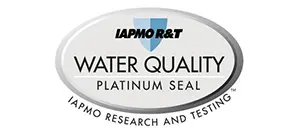When you pour yourself a glass of tap water or grab a bottle of water from the refrigerator, you might assume you’re drinking pure, clean water. Unfortunately, disturbing research reveals an invisible threat lurking in our water supply: microplastics.
What Are Microplastics?
Microplastics are tiny plastic fragments less than 5 millimeters in length—often so small they’re invisible to the naked eye. They come from various sources, including:
- The breakdown of larger plastic items like bottles and bags
- Microbeads from personal care products
- Synthetic fibers from clothing
- Tire dust from road traffic
- Industrial processes
These microscopic particles have become ubiquitous in our environment, making their way into our oceans, soil, air, and—most concerningly—our drinking water.
The Alarming Reality of Microplastics in Water
A landmark global study analyzed dozens of tap water samples from countries around the world with shocking results: 83% of samples were contaminated with plastic fibers. The United States had the highest contamination rate, with plastic fibers detected in 94% of tap water samples. As TIME magazine reported in their alarming 2017 investigation, this invisible threat has become a truly global crisis affecting water supplies on every continent.
Health Concerns: Why Microplastics Matter
The presence of microplastics in our drinking water raises serious health concerns:
- Pathogen Carriers: Microplastics can act as vectors for harmful bacteria, viruses, and other pathogens. Their surface provides an ideal environment for biofilm formation, potentially transporting dangerous microorganisms into our bodies.
- Toxic Chemicals: Plastics often contain or absorb harmful substances including heavy metals, flame retardants, and endocrine-disrupting chemicals like BPA and phthalates. These toxins can leach out of the plastic particles and into our systems.
- Physical Risks: The smallest microplastics can potentially cross cell membranes, enter the bloodstream, and become lodged in tissues and organs, potentially causing inflammation and immune responses. Recent studies have detected microplastics in human lung tissue, placenta, and even the bloodstream.
- Bioaccumulation: As these particles build up in our bodies over time, the long-term health effects remain largely unknown but concerning to scientists and health experts alike.
Sources of Microplastics in Our Water
Microplastics enter our water systems through multiple pathways:
- Wastewater Treatment Plants: While these facilities reduce many contaminants, they aren’t designed to filter out microscopic plastic particles, which pass through and enter waterways.
- Plastic Bottles: Ironically, bottled water—often marketed as purer than tap water—can contain significant microplastic contamination. The plastic packaging itself sheds particles into the water, especially when exposed to heat or sunlight.
- Household Plumbing: Plastic pipes and fixtures in our homes can release microplastics into the water flowing through them.
- Environmental Runoff: Rain and flooding wash microplastics from soil and surfaces into water supplies.
The Double Threat: Microplastics and Limescale
While microplastics present one set of concerns, many households also contend with limescale—mineral deposits consisting primarily of calcium and magnesium carbonates. Limescale builds up in pipes, appliances, and fixtures, reducing efficiency and shortening their lifespan. What many don’t realize is that limescale deposits can trap microplastics, creating concentrated areas of contamination within home plumbing systems.
When limescale breaks off or dissolves due to water chemistry changes, it can release these trapped microplastics in higher concentrations. Additionally, the minerals in limescale can potentially bind with chemicals leaching from microplastics, creating complex compounds with unknown health effects. Advanced water filtration systems that address both microplastics and limescale offer a comprehensive solution to these interrelated water quality issues.
Protecting Yourself from Microplastics
While completely avoiding microplastics is nearly impossible in today’s world, you can take steps to reduce your exposure:
- Install an Effective Filtration System: Advanced water filtration systems like the T-18 Water System can filter water down to 1 micron, effectively reducing plastic microfibers before they enter your home.
- Avoid Plastic Bottles: Reduce your use of bottled water, especially bottles exposed to heat or sunlight, which accelerates plastic degradation.
- Use Glass or Stainless Steel: Store water in glass or high-quality stainless steel containers instead of plastic.
- Maintain Your Water Heater: Regular maintenance can help reduce the shedding of plastic particles from internal components.
- Consider a Whole-House Solution: For comprehensive protection, whole-house filtration systems provide clean water from every tap in your home.
The Future of Water Safety
As awareness of the microplastic problem grows, researchers are developing new technologies to detect and decrease the presence of these particles from our water supply. Simultaneously, policymakers are beginning to address the issue through regulations on plastic production and disposal.
Until comprehensive solutions are implemented, however, individual action remains our best defense against this invisible threat. By understanding the problem and taking protective measures, we can significantly reduce our exposure to microplastics and their potential health risks.
Clean, safe water is essential for life—and ensuring that our water is truly clean means addressing the microscopic threats we’ve only recently begun to understand. With proper filtration and careful choices, we can protect ourselves and our families from the hidden danger of microplastics in our water.












